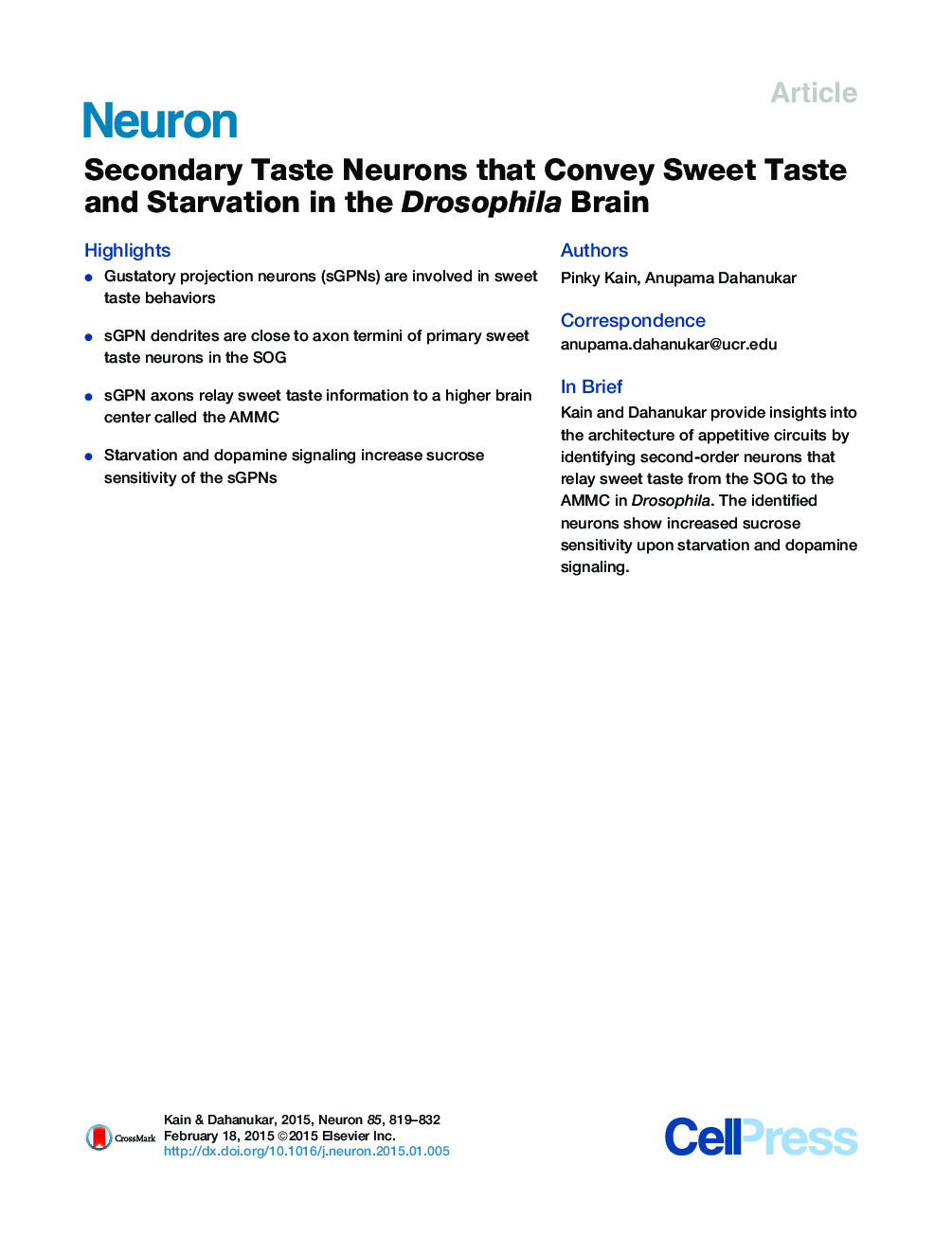| Article ID | Journal | Published Year | Pages | File Type |
|---|---|---|---|---|
| 4320894 | Neuron | 2015 | 14 Pages |
•Gustatory projection neurons (sGPNs) are involved in sweet taste behaviors•sGPN dendrites are close to axon termini of primary sweet taste neurons in the SOG•sGPN axons relay sweet taste information to a higher brain center called the AMMC•Starvation and dopamine signaling increase sucrose sensitivity of the sGPNs
SummaryThe gustatory system provides vital sensory information to determine feeding and appetitive learning behaviors. Very little is known, however, about higher-order gustatory circuits in the highly tractable model for neurobiology, Drosophila melanogaster. Here we report second-order sweet gustatory projection neurons (sGPNs) in the Drosophila brain using a powerful behavioral screen. Silencing neuronal activity reduces appetitive behaviors, whereas inducible activation results in food acceptance via proboscis extensions. sGPNs show functional connectivity with Gr5a+ sweet taste neurons and are activated upon sucrose application to the labellum. By tracing sGPN axons, we identify the antennal mechanosensory and motor center (AMMC) as an immediate higher-order processing center for sweet taste. Interestingly, starvation increases sucrose sensitivity of the sGPNs in the AMMC, suggesting that hunger modulates the responsiveness of the secondary sweet taste relay. Together, our results provide a foundation for studying gustatory processing and its modulation by the internal nutrient state.
